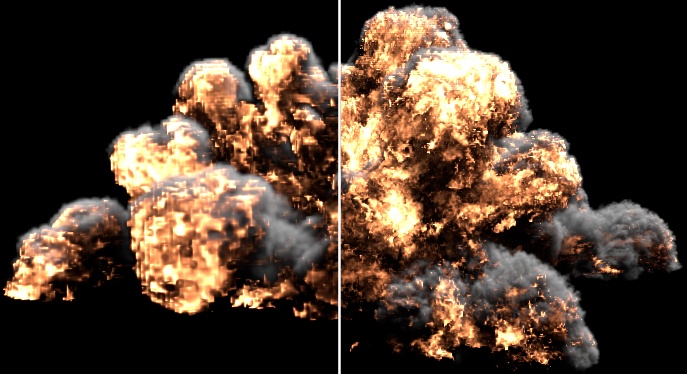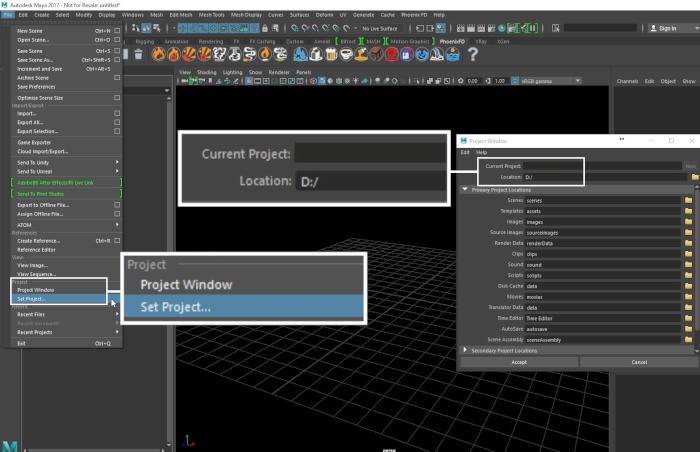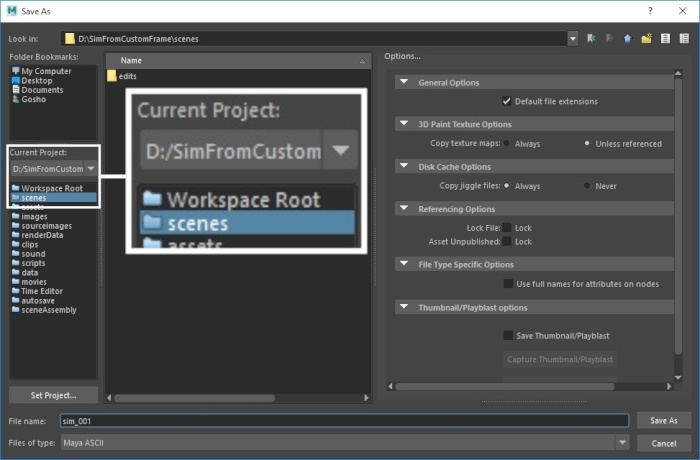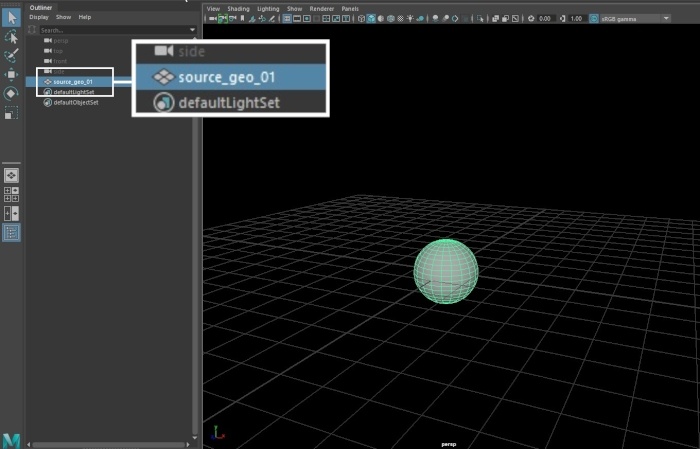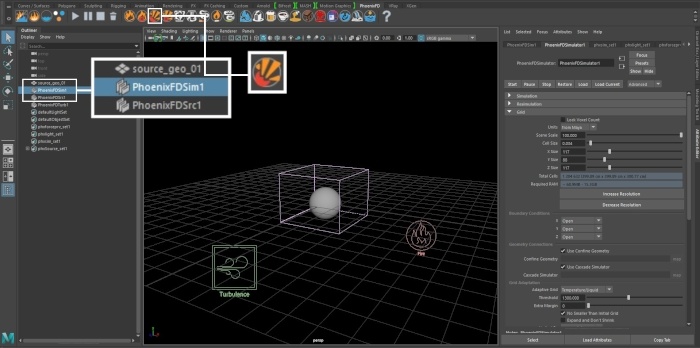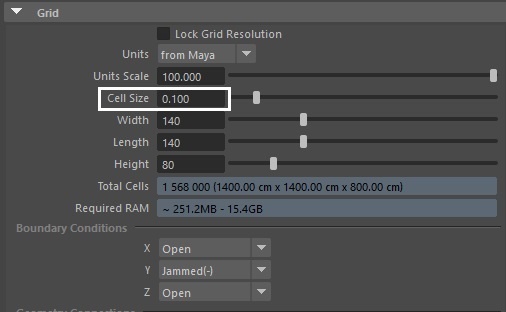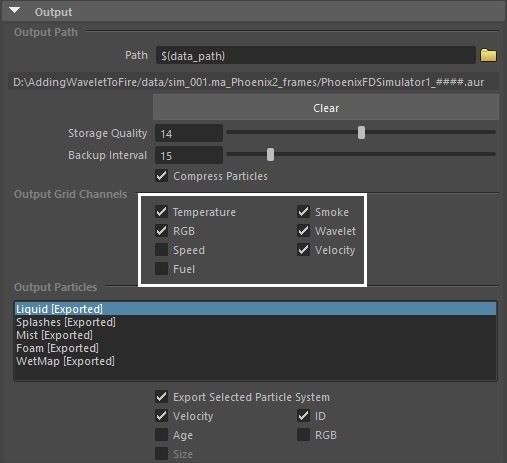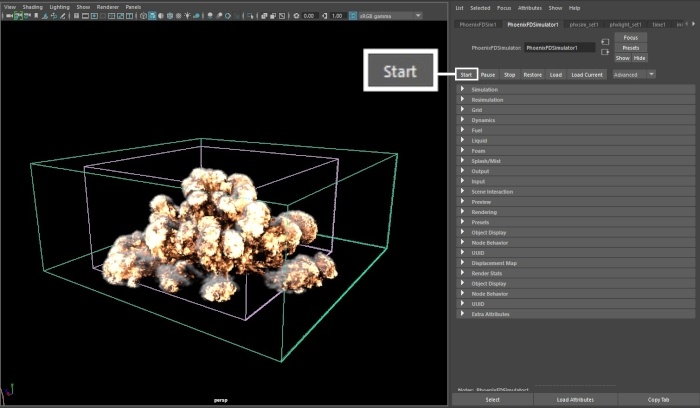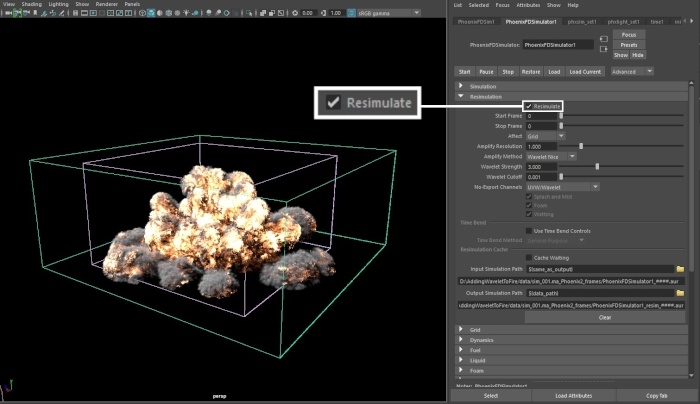This page provides a tutorial for adding wavelet turbulence to a simulation.
Overview
This is an Entry Level tutorial which requires no previous knowledge of Phoenix. A basic understanding of Maya would be helpful but is not a prerequisite for being able to follow along.
The instructions on this page will guide you in resimulating a fire simulation to add wavelet turbulence.
The image shows the original fire simulation (left) and the resimulation with wavelet turbulence (right).
Steps
Start by creating a new project from File → Project Window.
Click the New button at the top right corner of the window and give it a name.
This is important because Phoenix stores the simulation data in the data directory of the currently selected project. You can manually point to a different project directory from the File → Set Project... dialog.
Go to File → Save As and select the scenes directory of your current project.
Create a piece of geometry to use as an emitter. In this example, a default poly sphere is used.
Rename the geometry to source_geo_01.
With the source geometry selected, click the Explosion preset button on the Phoenix Shelf.
This will automatically generate an Explosion setup that you can play with.
Go to the Grid tab of the simulator and set the Cell Size to 0.1.
Because its possible to amplify the resolution of the simulation when using the Resimulate option, it is convenient to try and get away with the highest possible cell size - just enough to shape the simulation.
Enable Velocity and Wavelet export from the Output tab of the Simulator. Both of those are required for the Wavelet Nice interpolation method to work.
Hit the Start button to simulate 30 or so frames of the simulation.
Head to the Resimulation tab and enable Resimulate. You'll notice that the contents of the grid suddenly disappear - Phoenix keeps separate sequences of cache files for the original simulation and the resimulation result. You can always disable Resimulate to go back to the original cache.
The Amplify Resolution parameter increases the resolution of the resimulation grid. A value of 1.0 doubles the number of voxels for each axis, producing a total 8x increase in the voxel count compared to the original grid. If the original simulation grid consisted of 1 000 000 voxels, the resimulation grid will have 8 000 000 voxels. A value of 2.0 will quadruple the number of voxels on each axis for a total of 64x increase.
The Wavelet Strength parameter controls the strength of the wavelet turbulence itself.
You can adjust the Amplify Method parameter if needed. This controls how velocity is sampled. The Wavelet Nice method will produce a higher quality turbulence effect at the cost of simulation time. The Interpolate method can be used if the Wavelet channel is not exported.

